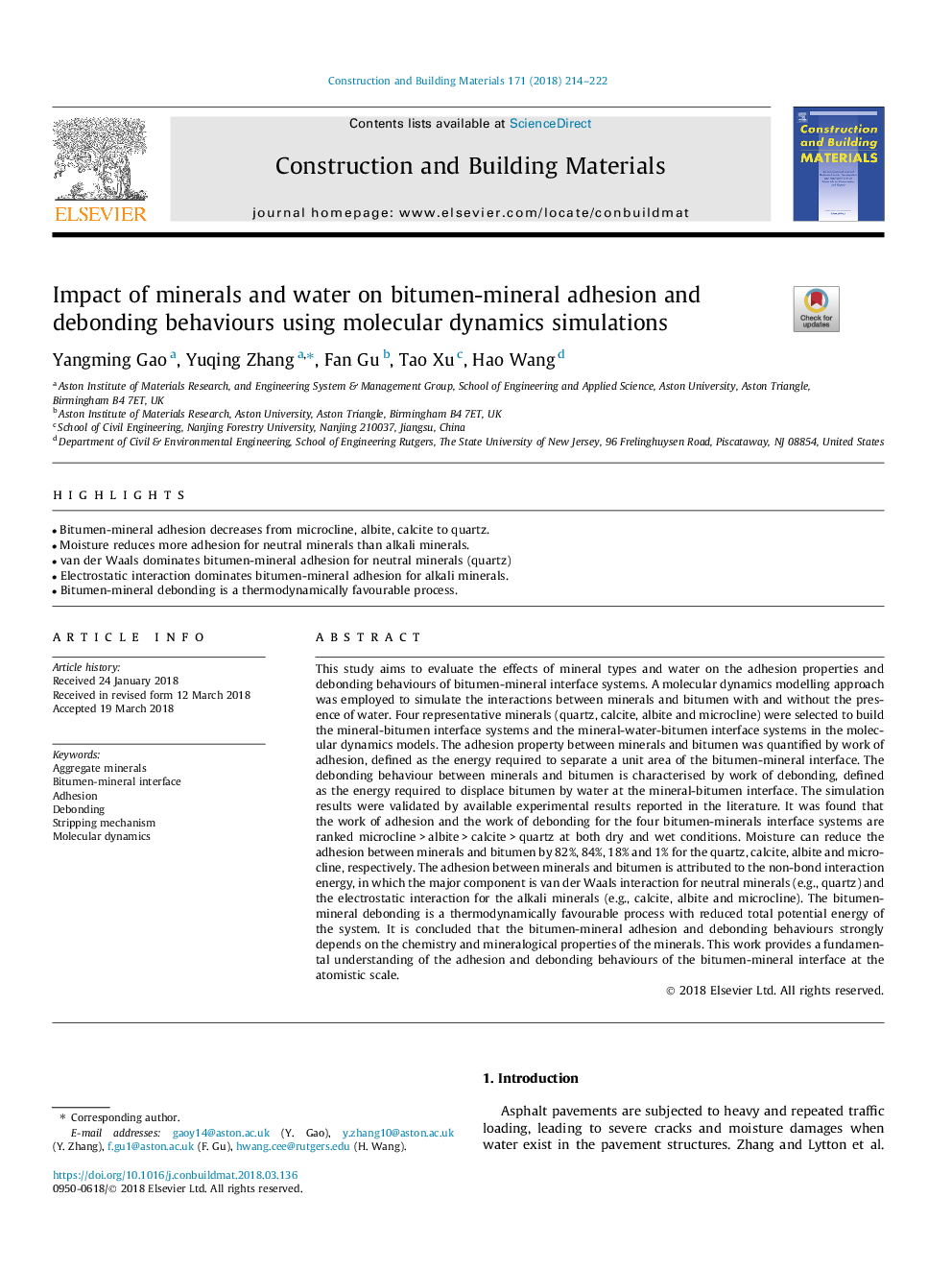| Article ID | Journal | Published Year | Pages | File Type |
|---|---|---|---|---|
| 6714006 | Construction and Building Materials | 2018 | 9 Pages |
Abstract
This study aims to evaluate the effects of mineral types and water on the adhesion properties and debonding behaviours of bitumen-mineral interface systems. A molecular dynamics modelling approach was employed to simulate the interactions between minerals and bitumen with and without the presence of water. Four representative minerals (quartz, calcite, albite and microcline) were selected to build the mineral-bitumen interface systems and the mineral-water-bitumen interface systems in the molecular dynamics models. The adhesion property between minerals and bitumen was quantified by work of adhesion, defined as the energy required to separate a unit area of the bitumen-mineral interface. The debonding behaviour between minerals and bitumen is characterised by work of debonding, defined as the energy required to displace bitumen by water at the mineral-bitumen interface. The simulation results were validated by available experimental results reported in the literature. It was found that the work of adhesion and the work of debonding for the four bitumen-minerals interface systems are ranked microclineâ¯>â¯albiteâ¯>â¯calciteâ¯>â¯quartz at both dry and wet conditions. Moisture can reduce the adhesion between minerals and bitumen by 82%, 84%, 18% and 1% for the quartz, calcite, albite and microcline, respectively. The adhesion between minerals and bitumen is attributed to the non-bond interaction energy, in which the major component is van der Waals interaction for neutral minerals (e.g., quartz) and the electrostatic interaction for the alkali minerals (e.g., calcite, albite and microcline). The bitumen-mineral debonding is a thermodynamically favourable process with reduced total potential energy of the system. It is concluded that the bitumen-mineral adhesion and debonding behaviours strongly depends on the chemistry and mineralogical properties of the minerals. This work provides a fundamental understanding of the adhesion and debonding behaviours of the bitumen-mineral interface at the atomistic scale.
Keywords
Related Topics
Physical Sciences and Engineering
Engineering
Civil and Structural Engineering
Authors
Yangming Gao, Yuqing Zhang, Fan Gu, Tao Xu, Hao Wang,
